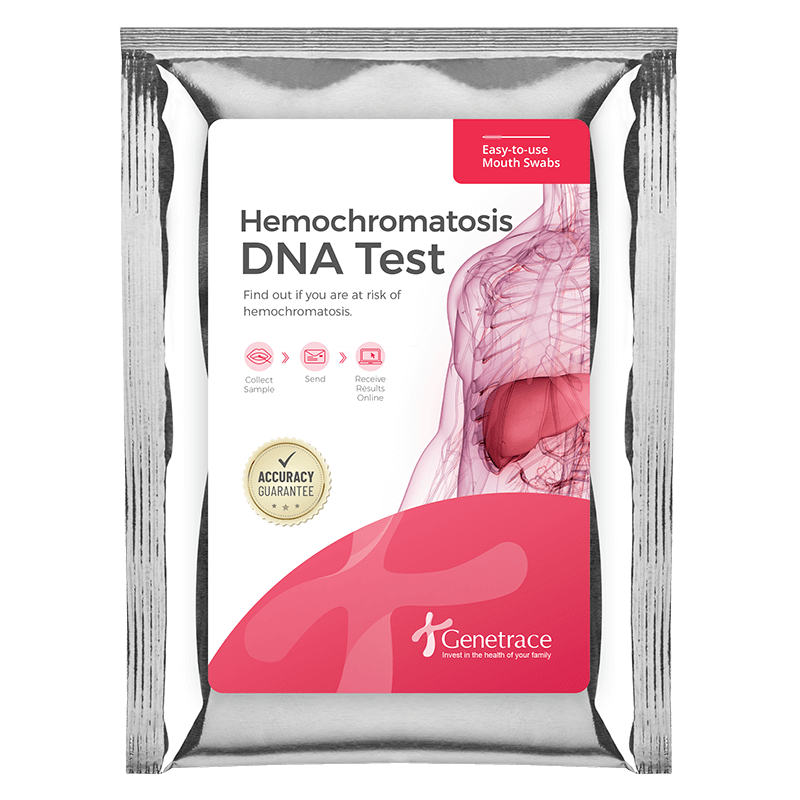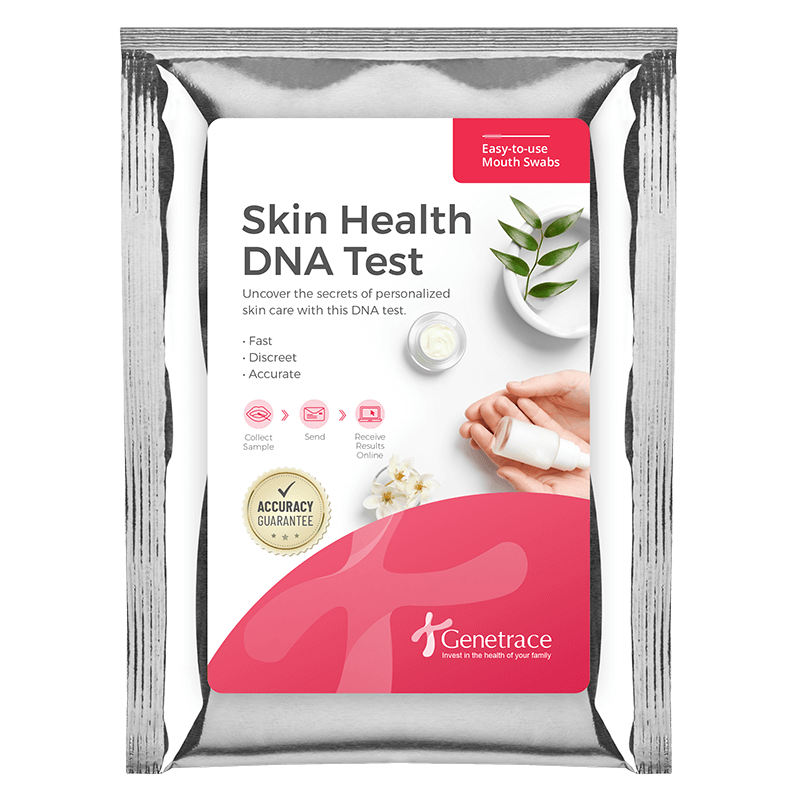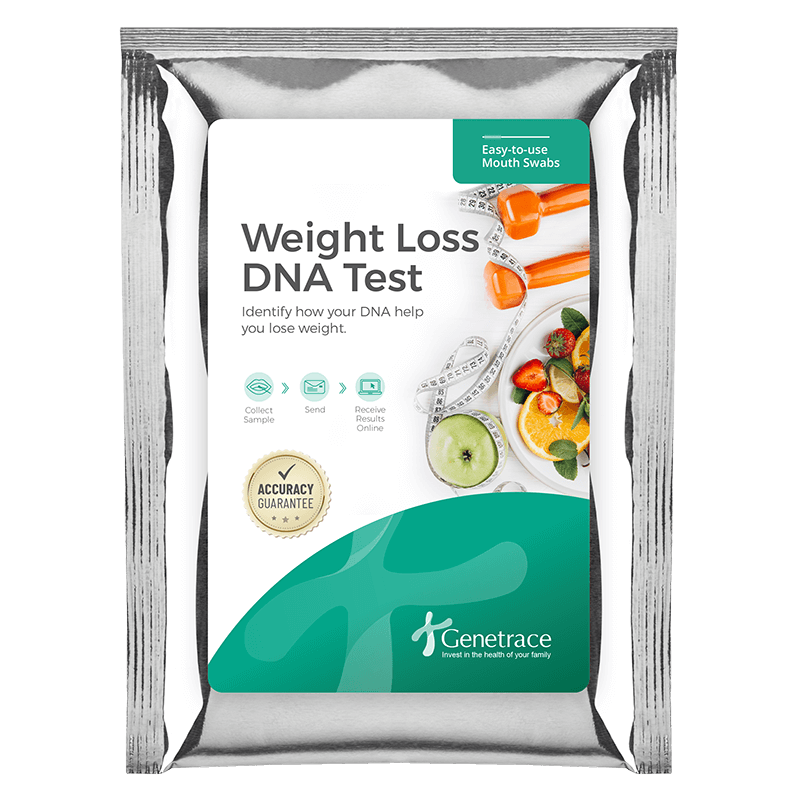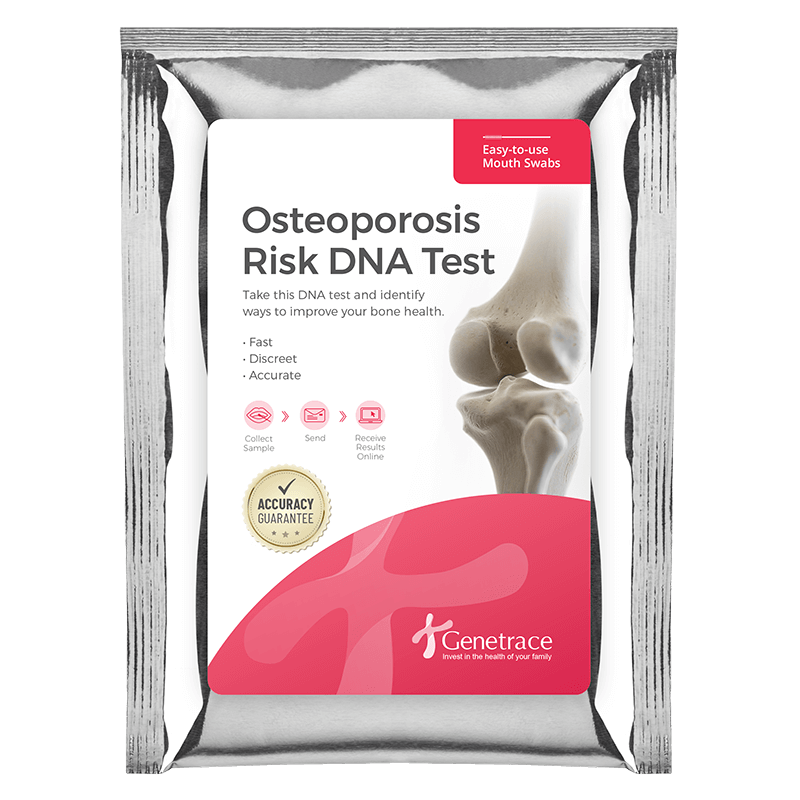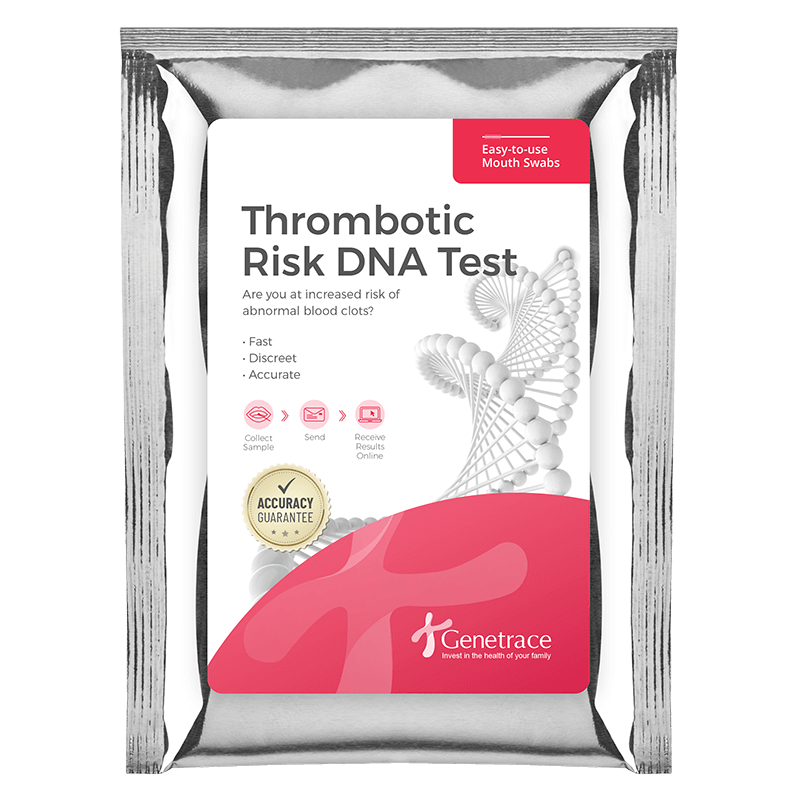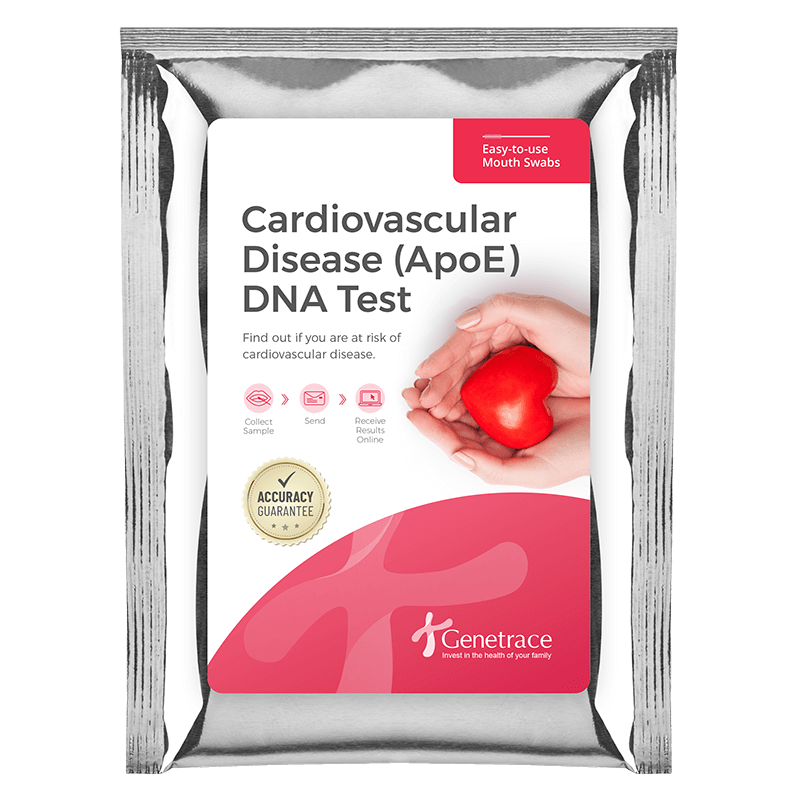Kit includes all lab fees and free return shipping to the lab.
Receive secure, confidential results through your online dashboard.
All tests performed in our AABB, ISO 17025 & CLIA accredited laboratory.
What is Hemochromatosis?
Hereditary Hemochromatosis is a genetic disorder that causes the body to absorb and store too much iron. The excess iron builds up in the body’s organs over time and eventually leads to organ damage. If hemochromatosis is not detected and treated early, it may eventually cause serious irreversible disorders such as arthritis, liver disease, heart disease and diabetes later in life.
Early detection can prevent future complications
Since hemochromatosis is treatable if detected early, screening for hemochromatosis can prevent potentially fatal complications from occurring. DNA testing for hemochromatosis is fast, simple and inexpensive.
The best time to get tested is before 30 years of age, so that the disease can be detected before organ damage occurs. When detected and treated early, there is a good chance of avoiding life-threatening complications of iron build up in the body later in life. If any family members test positive for hemochromatosis, other family members should also be tested.
Find out if you carry a mutation in the HFE gene that increases your risk of iron overload.
The DNA test examines the HFE gene for mutations that cause the gene to become defective. The HFE gene has three known mutations which account for ~85% of all cases of hereditary hemochromatosis, namely: C282Y, H63D and S65C.
C282Y
The most common HFE mutation that causes hemochromatosis is the C282Y mutation. This mutation is a single nucleotide substitution (c.845G>A), which changes a highly conserved cysteine (at amino acid position 282) to a tyrosine. This amino acid change prevents the formation of disulfide bond in the HFE – β-2 microglobulin complex and inhibits the regulation of iron absorption. 80 – 85% of patients affected by hereditary hemochromatosis have two copies of this C282Y mutation (C282Y homozygotes). Iron overload is detected in 90% of male C282Y homozygotes but only in 50% of female C282Y homozygotes, and, overall, approximately 30% of C282Y homozygotes will not show any iron overload symptoms. Individuals that have one HFE gene with the C282Y mutation and one normal HFE gene (C282Y heterozygotes) sometimes experience mild symptoms of hemochromatosis, such as lethargy and mild joint pain, but the disease is unlikely to develop further.
H63D
H63D is the second most significant mutation leading to hemochromatosis. This mutation is a single nucleotide substitution (c.187C>G), which changes a histidine (at amino acid position 63) to an aspartic acid. This mutation is thought to inhibit the formation of an intramolecular salt bridge during the interaction between the HFE protein and the transferrin receptor, thereby reducing the control of iron absorption. Individuals that carry two copies of the H63D mutation (H63D homozygotes) have a slightly increased risk of hemochromatosis but often other precipitating factors (e.g. hepatitis or alcohol abuse) are also required before iron overload occurs.
S65C
S65C is a very rare mutation, which contributes slightly to hemochromatosis. This mutation is a single nucleotide substitution (c.193A>T), which changes a serine (at amino acid position 65) to a cysteine. The mechanism that this mutation prevents iron regulation is currently unknown. Individuals that carry two copies of the S65C mutation (S65C homozygotes) do not appear to be at an increased risk of hemochromatosis. However, when this mutation occurs in a compound heterozygote with a C282Y mutation, there is slightly increased risk of hemochromatosis.
Age Limit None. This test can be taken at any age.
Collection Method Buccal swabs. The test kit contains buccal swabs and instructions for collecting a buccal swab sample from inside the mouth.
Specimen Requirements Four buccal swabs, rubbed inside the mouth against the cheek for 15 seconds.
Alleles Identified Three mutations in the HFE gene are identified in this analysis – C282Y (c.845G>A), H63D (c.187C>G) and S65C (c.193A>T).
Sample Handling DNA test kits do not have an expiry date and can be used at any time. Once the DNA sample is collected, it must be returned to the laboratory for testing within three months of collection. No refrigeration is required. Store at room temperature.
Limitations It is important to remember that the presence of one or more of these HFE mutations (C282Y, H63D and S65C) does not mean that an individual will definitely develop hemochromatosis. Each mutation does increase the risk in homozygotes and compound heterozygotes, but there are some individuals that have these mutations and never suffer from increased iron levels. An increased risk of hemochromatosis can also be caused by other genetic and non-genetic factors that will not be detected in this assay. The results of this assay should be interpreted in conjunction with symptoms, clinical findings and medical and family history.
Summary
What is Hemochromatosis?
Hereditary Hemochromatosis is a genetic disorder that causes the body to absorb and store too much iron. The excess iron builds up in the body’s organs over time and eventually leads to organ damage. If hemochromatosis is not detected and treated early, it may eventually cause serious irreversible disorders such as arthritis, liver disease, heart disease and diabetes later in life.
Early detection can prevent future complications
Since hemochromatosis is treatable if detected early, screening for hemochromatosis can prevent potentially fatal complications from occurring. DNA testing for hemochromatosis is fast, simple and inexpensive.
The best time to get tested is before 30 years of age, so that the disease can be detected before organ damage occurs. When detected and treated early, there is a good chance of avoiding life-threatening complications of iron build up in the body later in life. If any family members test positive for hemochromatosis, other family members should also be tested.
What's Measured?
Find out if you carry a mutation in the HFE gene that increases your risk of iron overload.
The DNA test examines the HFE gene for mutations that cause the gene to become defective. The HFE gene has three known mutations which account for ~85% of all cases of hereditary hemochromatosis, namely: C282Y, H63D and S65C.
C282Y
The most common HFE mutation that causes hemochromatosis is the C282Y mutation. This mutation is a single nucleotide substitution (c.845G>A), which changes a highly conserved cysteine (at amino acid position 282) to a tyrosine. This amino acid change prevents the formation of disulfide bond in the HFE – β-2 microglobulin complex and inhibits the regulation of iron absorption. 80 – 85% of patients affected by hereditary hemochromatosis have two copies of this C282Y mutation (C282Y homozygotes). Iron overload is detected in 90% of male C282Y homozygotes but only in 50% of female C282Y homozygotes, and, overall, approximately 30% of C282Y homozygotes will not show any iron overload symptoms. Individuals that have one HFE gene with the C282Y mutation and one normal HFE gene (C282Y heterozygotes) sometimes experience mild symptoms of hemochromatosis, such as lethargy and mild joint pain, but the disease is unlikely to develop further.
H63D
H63D is the second most significant mutation leading to hemochromatosis. This mutation is a single nucleotide substitution (c.187C>G), which changes a histidine (at amino acid position 63) to an aspartic acid. This mutation is thought to inhibit the formation of an intramolecular salt bridge during the interaction between the HFE protein and the transferrin receptor, thereby reducing the control of iron absorption. Individuals that carry two copies of the H63D mutation (H63D homozygotes) have a slightly increased risk of hemochromatosis but often other precipitating factors (e.g. hepatitis or alcohol abuse) are also required before iron overload occurs.
S65C
S65C is a very rare mutation, which contributes slightly to hemochromatosis. This mutation is a single nucleotide substitution (c.193A>T), which changes a serine (at amino acid position 65) to a cysteine. The mechanism that this mutation prevents iron regulation is currently unknown. Individuals that carry two copies of the S65C mutation (S65C homozygotes) do not appear to be at an increased risk of hemochromatosis. However, when this mutation occurs in a compound heterozygote with a C282Y mutation, there is slightly increased risk of hemochromatosis.
Technical Information
Age Limit None. This test can be taken at any age.
Collection Method Buccal swabs. The test kit contains buccal swabs and instructions for collecting a buccal swab sample from inside the mouth.
Specimen Requirements Four buccal swabs, rubbed inside the mouth against the cheek for 15 seconds.
Alleles Identified Three mutations in the HFE gene are identified in this analysis – C282Y (c.845G>A), H63D (c.187C>G) and S65C (c.193A>T).
Sample Handling DNA test kits do not have an expiry date and can be used at any time. Once the DNA sample is collected, it must be returned to the laboratory for testing within three months of collection. No refrigeration is required. Store at room temperature.
Limitations It is important to remember that the presence of one or more of these HFE mutations (C282Y, H63D and S65C) does not mean that an individual will definitely develop hemochromatosis. Each mutation does increase the risk in homozygotes and compound heterozygotes, but there are some individuals that have these mutations and never suffer from increased iron levels. An increased risk of hemochromatosis can also be caused by other genetic and non-genetic factors that will not be detected in this assay. The results of this assay should be interpreted in conjunction with symptoms, clinical findings and medical and family history.
Explore your DNA Story
Embark on a journey of self-discovery with our at-home DNA tests, powered by cutting-edge science made accessible for all.
Simple Sample Collection
Secure Online Results
Accredited Laboratory
Discreet & Confidential
How it works
Purchase your kit
Collect DNA Sample
Mail samples to the lab
Receive your results
FAQ's
Here are the answers to the most frequently asked questions about this test.

